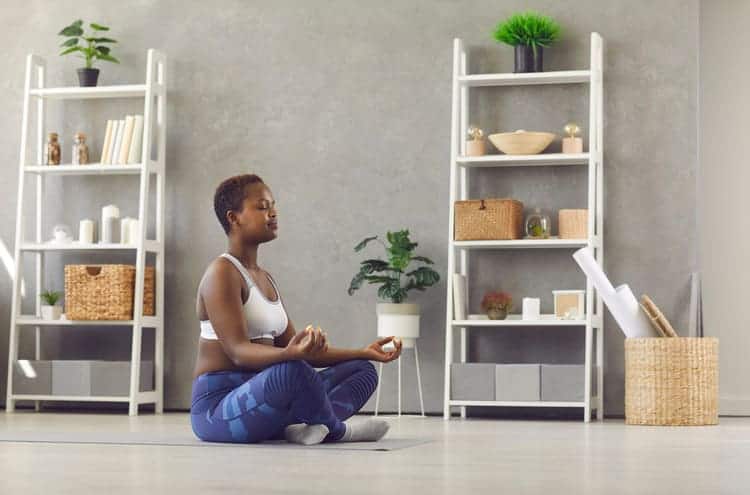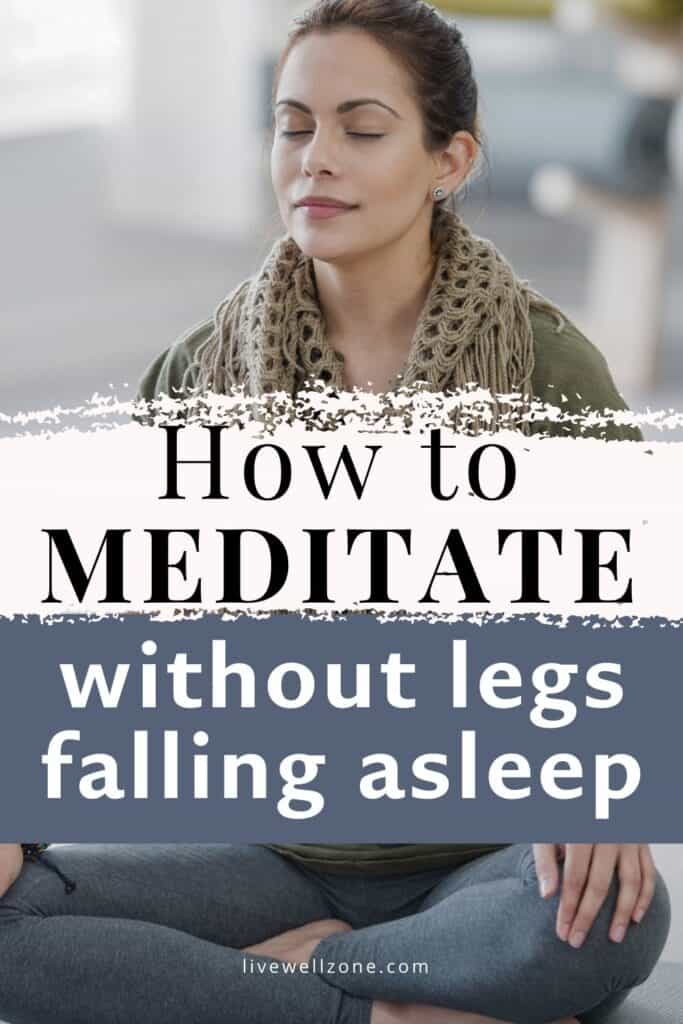
Meditation is a wonderful practice that can boost mental clarity, reduce stress and enhance the overall quality of your life. However, when you sit down to meditate, you may notice that your legs and feet start to go numb within a few minutes.
The sensation is physically uncomfortable and as a result, it can easily distract you from your meditation.
But have no worries! There are some things you can do to overcome this common and frustrating experience.
There are ways to overcome it and in this guide I’ll be sharing some tips for how you can meditate without your legs falling asleep.
NOTE: This article contains some affiliate links and I earn a commission (at no additional cost to you) if you use them to make a purchase.
WHY DO MY LEGS AND FEET GO NUMB WHEN MEDITATING?
Whether you experience a feeling of tingling, numbness, pins-and-needles or some combination of all of them, several things can contribute to those sensations, including:
Several things can contribute to that compression, including:
- poor circulation through the legs.
- lack of resiliency in the core and hip muscles. Resiliency is a combination of strength and flexibility. You need both in order to comfortably sit in a basic cross-legged position (aka sukhasana), half lotus or full lotus position.
- compression of the nerves that run down the legs. This often comes from the previous point – lack of resiliency – or not having a properly aligned posture.
HOW TO STOP YOUR LEGS FROM FALLING ASLEEP DURING MEDITATION
1. Practice Yoga or Qi-Gong
There’s a reason why the yogic tradition includes physical postures.
Those postures are meant to train and prepare the body for meditation.
In particular, those yoga postures stretch and strengthen the body so that we can comfortably sit in meditation.
So, if you’re not doing so already, consider incorporating yoga into your exercise routine.
Here’s a relaxing routine to start with:
Another practice that can be tremendously helpful is Qi Gong.
Similar to yoga, Qi-Gong is excellent for balancing the body and most importantly, moving stuck energy (which we usually experience in the form of tightness, cramping or numbness).
If you’re brand new to Qi-Gong, below is an excellent beginner routine:
2. Sit On A Meditation Cushion
When you sit on a cushion, your hips are higher than your legs.
This change immediately relieves pressure on the nerves around the hips (such as the sciatic nerve) and creates more space for blood flow down the legs.
A cushion also makes it easier to keep your spine straight, which also alleviates pressure on the hips and legs.
Here’s the cushion that I personally use every day.
3. Place Blocks or a Pillow Under Your Knees
When I first got started with yoga and meditation, I would experience pinching in one of my knees whenever I sat in a cross legged position.
Not only was it uncomfortable, but that leg also went to sleep pretty quickly (since that pinching sensation is an indication of potential nerve compression/poor circulation).
The one thing that helped was to place a small cushion underneath that knee. A yoga block also works, although it’s not as soft as a cushion.
This small adjustment significantly increased the amount of time that I could spend in cross-legged position!
4. Check Your Pelvic and Spinal Alignment
Whether you use a cushion or not, it’s important to pay attention to the alignment of your spine and hips.
Basically, you want to make sure that your pelvis isn’t tilted too far forward or too far backward.
Tilting the pelvis too far in either direction will affect the natural curvature of your spine.
Ultimately, this will impact your nerves and muscles while you meditate.
So, make sure to maintain the natural curvature in your lower back.
No more, no less.
FAQS ABOUT PREVENTING YOUR LEGS FROM GOING NUMBER DURING MEDITATION
Do you have to fold your legs to meditate?
You don’t have to sit in a cross legged position in order to meditate. You can sit in a chair, lie down or even do a walking meditation.
CONCLUSION
To prevent your legs from going numb during meditation, consider using a meditation cushion, a chair or lying down.
Remember, that one of the main reasons why we meditate is to cultivate awareness.
So, when physical discomfort shows up, that’s an opportunity to call in awareness.
Feel into your body and listen to what it needs
It’s all part of meditating!

You Might Also Like:
How to Meditate Without Getting Bored: 10 Tips To Enjoy Your Practice

